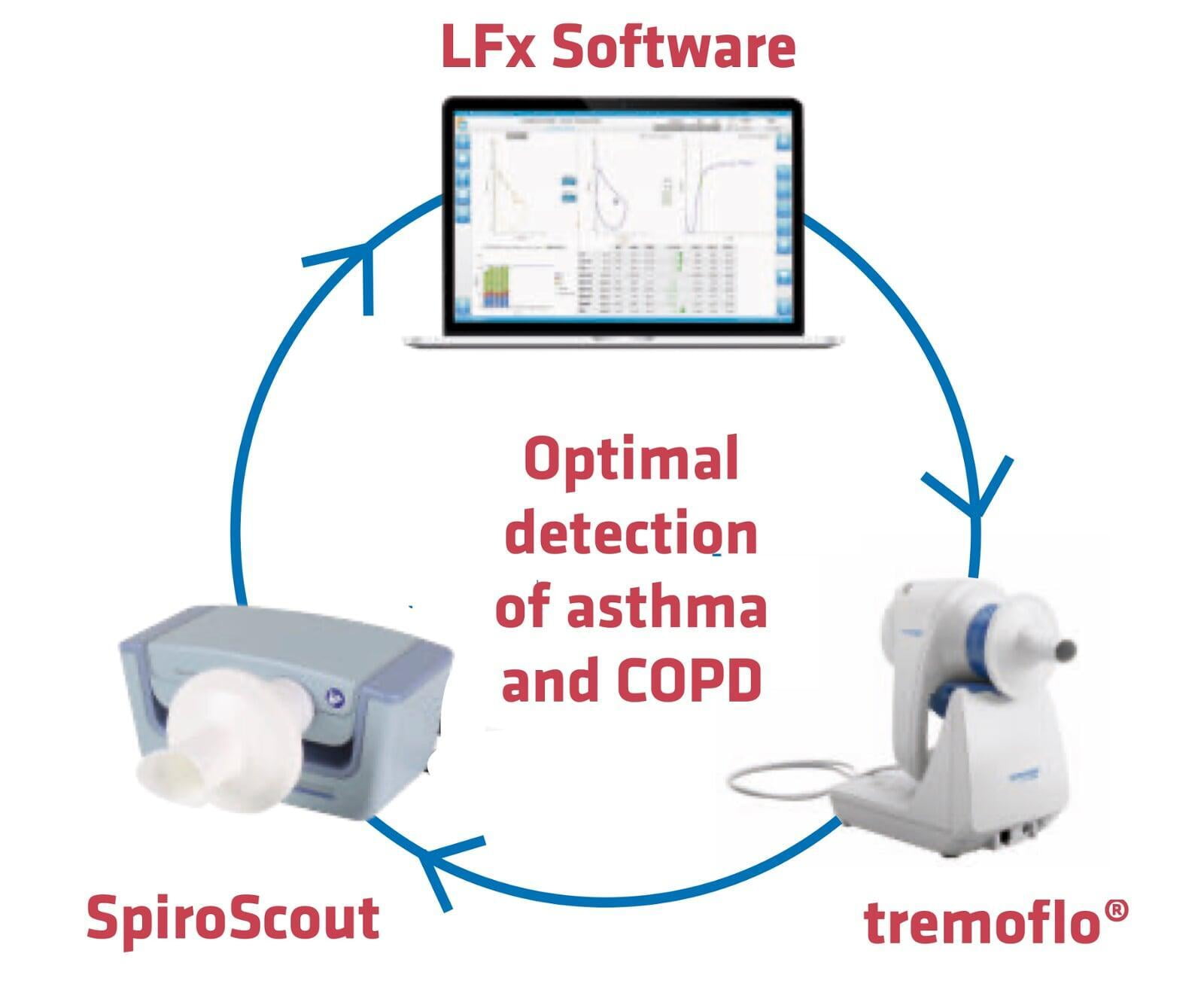By América Torres
According to the GINA Guide 2019, asthma is estimated to affect 300 million people worldwide. In fact, it is one of the most common and costly diseases in the United States. It consists of diffuse inflammation of the airways caused by various stimuli, which cause a partial or completely reversible bronchoconstriction. Symptoms and signs include shortness of breath, chest tightness, coughing, and wheezing. In order to diagnose this disease, the physician analyzes the patient's medical history, performs a physical exam and orders pulmonary function tests.
Asthma is a very common and potentially serious chronic disease. It causes respiratory symptoms that limit the daily activity of those who suffer from it, as well as crises that sometimes require urgent medical attention and can be fatal. Therefore, it implies a considerable burden for patients, their families, and the health system. Fortunately, there are effective treatments that help patients have good control of the condition.
In this article, we will focus on presenting an overview of asthma through the available figures according to reports from various researchers and organizations.
Pediatric Asthma
Pediatric Asthma
Before delving into the subject matter, it is worth dedicating a space to talk about pediatric asthma, as it is a significant cause of morbidity, resulting in numerous days of altered activity and school absence.
According to the 2022 GINA Guide,in children 6-11 years of age, (as in adults) the evaluation of control is based on symptoms, limitation of activities and use of rescue medication. The Guide recommends considering the impact of asthma on a child's daily activities, including sports, social life, and absence from school. In addition, it indicates that in pediatric asthma the degree of airflow limitation varies a lot, and that a marked reduction in lung function is often observed before parents recognize the problem.
For this reason, several numerical control systems have been developed specifically for children, for example, the Asthma Control Questionnaire (ACQ)89,90. Or, the Childhood Asthma Control Test (c-ACT)88, which has sections for parents and children to fill out separately. Also, some asthma control scores for children include exacerbations with symptoms, among them we can mention Test for Respiratory and Asthma Control in Kids (TRACK)91-93 and Composite Asthma Severity Index (CASI).
Prevalence of Asthma in the United States
Prevalence of Asthma in the United States
• In the United States, approximately 1 in 13 people have asthma.
• Out of that number, 21 million are adults aged 18 and older.
• The prevalence of adult asthma is higher in women: around 9.7% vs. 6.2% in men.
• Asthma rates are higher in African American adults.
• Around 4.8 million children under the age of 18 have asthma, making it one of the leading chronic diseases among this population.
• Non-Hispanic African American children are more than twice as likely to have asthma compared to non-Hispanic white children.
• Contrary to adult figures, asthma is more common in male children than in female children: it affects around 7.3% of boys vs. 5.6% of girls.
Rates of Asthma Attacks
According to a report from the Asthma & Allergy Foundation of America, in 2020, 40.7% of adults aged 18 and older with asthma in the United States reported having one or more attacks in the previous year.
Regarding pediatric asthma, in 2020, 42.7% of children under the age of 18 with this condition reported one or more attacks in the previous year. Among them, approximately 52.9% of children under 5 years old experienced an attack. The report highlights that despite asthma being manageable, 50% of affected children are not under control.
The good news is that according to data from the Centers for Disease Control and Prevention (CDC), asthma attacks in both, adults and children, have decreased between 2001 and 2021.
Rates of Mortality
Despite asthma-related deaths are preventable with proper treatment and care, the aforementioned report from the Asthma & Allergy Foundation of America provides the following figures in the United States:
• On average, 10 people die from asthma daily.
• In 2020, asthma-related deaths increased for the first time in 20 years.
• Adults are six times more likely to die from asthma than children. Among adults, women are more likely to die than adult men. However, boys and girls have an equal likelihood.
• African Americans have nearly three times more chances of dying from asthma than white individuals.
• However, in 2021, African American women had over three times higher chances of dying from asthma than white men.
The Economic Burden of Asthma
As if the impact of asthma on patients’ daily lives and deaths were not enough, we must also consider the economic costs it generates. The following figures for the United States provide us with a perspective on the costs associated with this disease.
From 2008 to 2013, the annual economic cost of asthma was over $81.9 billion. Out of this amount, medical expenses and the loss of work and school days accounted for:
- $3 billion in losses due to missed work and school days.
- $29 billion due to asthma-related mortality.
- $50.3 billion in medical costs.
It is estimated that medical costs for people with asthma are $3,266 higher per year (in 2015 US dollars) compared to costs paid by individuals without this disease. Similarly, among children aged 5 to 17 years, asthma is one of the leading causes of missed school days.
Spirometry + Oscillometry to Fight Against Asthma
Spirometry + Oscillometry to Fight Against Asthma

Despite being a very common disease, asthma remains underdiagnosed due to various factors. That's why specialists in pulmonary health need tools that help them detect asthma promptly and with full certainty.
Recognizing this need, at SCHILLER-GANSHORN, we have just launched an effective, reliable, and easy-to-use solution, where the patient simply needs to breathe normally to take the test. It is well known that spirometry is the gold standard for detecting diseases such as COPD and asthma. To complement this tool, we offer pulmonologists the Airway Oscillometry System, tremoflo®. While Spiro Scout ultrasonic spirometer detects whether there is airway obstruction or restriction, tremoflo® shows where it is located.
Click on the product names to learn more about their advanced functionalities.
REFERENCES
Global Initiative for Asthma (GINA) 2019. https://ginasthma.org/wp-content/uploads/2019/07/GINA-Spanish-2019-wms.pdf
“Asthma Facts and Figures”. Asthma & Allergy Foundation of America. https://aafa.org/asthma/asthma-facts/
“Asthma” in MSD Manual. Victor E. Ortega MD, PhD, Mayo Clinic Arizona; Manuel Izquierdo, DO, Wake Forest Baptist Health. https://www.msdmanuals.com/professional/pulmonary-disorders/asthma-and-related-disorders/asthma
Classifying Asthma Severity in Children Mismatch Between Symptoms, Medication Use, and Lung Function. Leonard B. Bacharier et al. https://www.atsjournals.org/doi/10.1164/rccm.200308-1178OC
Global Initiative for Asthma (GINA) 2022. https://ginasthma.org/wp-content/uploads/2022/07/GINA-Main-Report-2022-FINAL-22-07-01-WMS.pdf
Centers for Disease Control and Prevention. (2023). Asthma Data Visualizations. https://www.cdc.gov/asthma/data-visualizations/default.htm



